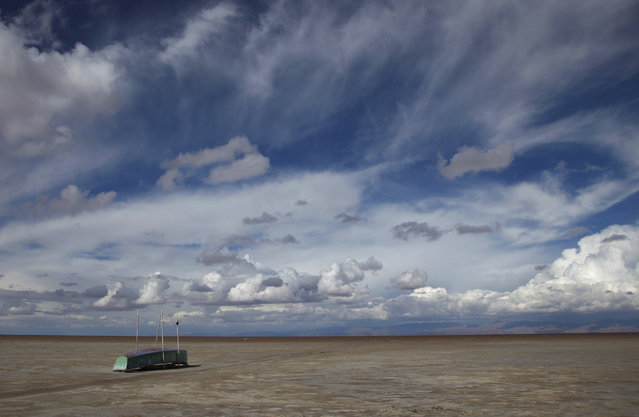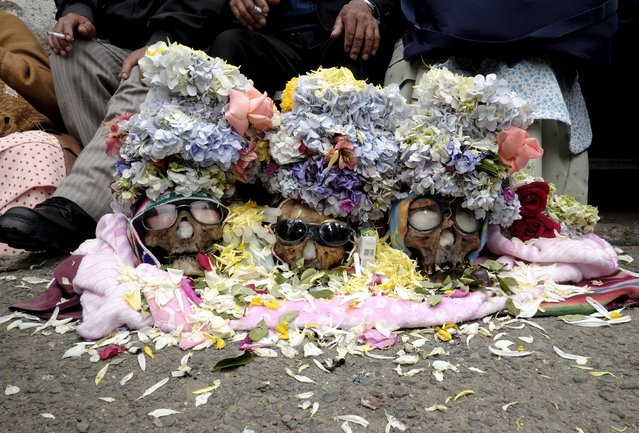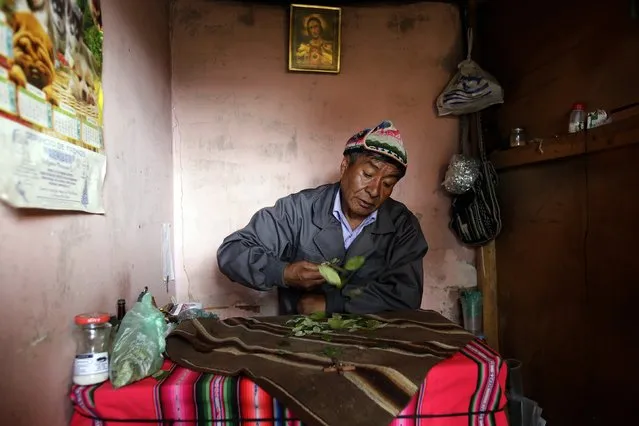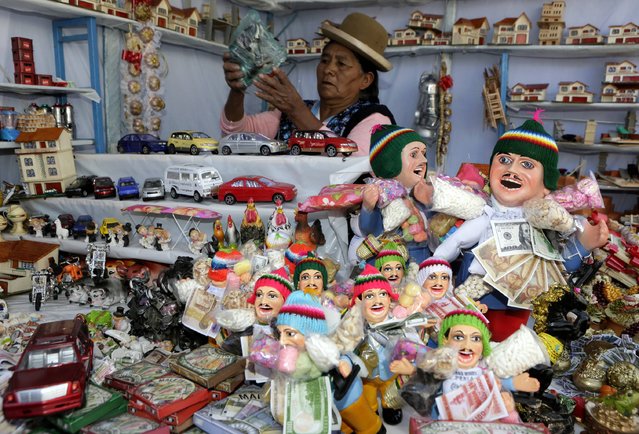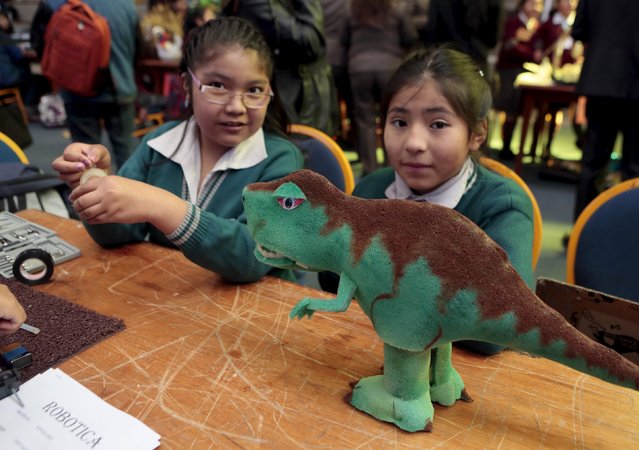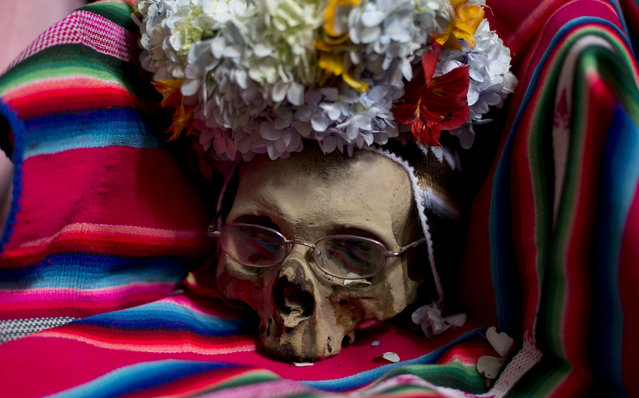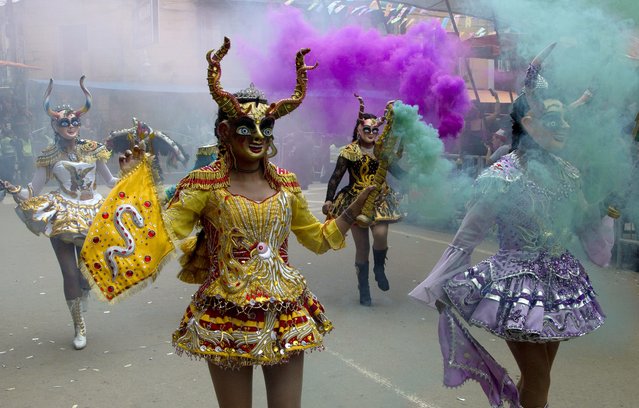
Dancers perform the traditional “Diablada” or Dance of the Devils during the Carnival in Oruro, Bolivia, Saturday, February 10, 2018. Thousands of colorfully dressed dancers and musicians kick off Carnival celebrations in the Bolivian city of Oruro. (Photo by Juan Karita/AP Photo)
13 Feb 2018 06:37:00,post received
0 comments


